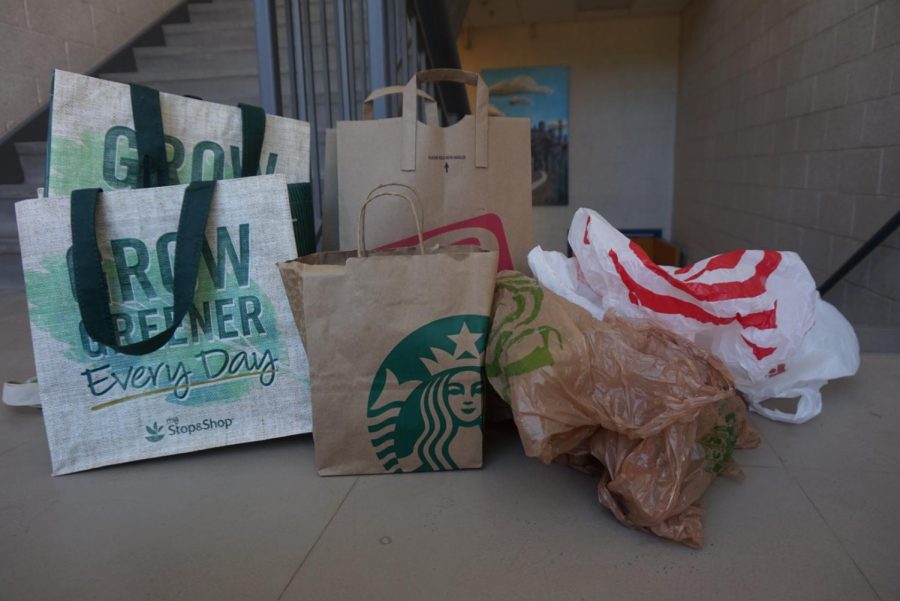Paper bags are not a permanent solution
Staff writer Elyssa Rubin argues that both paper and plastic bags have negative effects on our environment.
April 26, 2019
In recent months and years, grocery bags have been changing. Plastic bag bans have been spreading across the world, including being approved at Northborough’s Town Meeting on April 23, causing a number of stores to switch back to paper bags as an alternative to plastic. However, paper is not the permanent solution. It’s still disposable, creates pollution and wastes trees.
People and wildlife need trees. Without them, we die. They replace the carbon dioxide that we exhale with oxygen for us to inhale, provide us with shade which we use to cool off in the summer and give smaller animals, such as chipmunks and squirrels, a home.
According to a Simple Ecology’s article “Paper or Plastic Shopping Bags?” the 10 million paper bags that Americans use require cutting down 14 million trees every year.
Every tree that we cut down adds to the buildup of carbon dioxide in the atmosphere created by vehicles, burning fossil fuels and much more, which contributes to climate change.
According to a 1 Bag At A Time’s article “Paper Bags,” paper emits 51 percent more global warming gasses and creates 50 times more water pollution.
Paper can be made from other sources such as rice, algae, cotton, old clothes, hemp, kenaf, banana, coffee bean, citrus, tobacco and bamboo, but it still requires energy to produce, polluting the environment.
Compared to plastic, paper also rips easily, which leads to groceries falling through the bag. When bagging groceries in plastic, the bag’s stretchability allows you to easily bag your groceries without worrying about it ripping. Paper bags can rip while you’re bagging your groceries if you’re not careful.
Paper is biodegradable, but that’s not the greatest idea when bagging frozen food since it causes the paper to disintegrate. The condensation created by frozen food breaks down the paper, causing items to tear through the bag. However, you don’t have to worry about bagging frozen food in plastic.
As an alternative to both paper and plastic bags, stores should go bag free. By offering discounts to those who use reusable bags and putting environmental warning labels on all bags, stores might be able to persuade customers to get on board with the idea and eventually go bag free. If we still wish to continue bagging our groceries, we should bring in our own reusable bags. Otherwise, we can just bring our groceries and other items home without bags.
Our school can make a difference by simply using reusable lunch bags instead of disposable. This is the best solution to help decrease the amount of pollution and trash winding up in our environment.












John • Oct 23, 2024 at 4:47 am
Great article, I highly recommend using fruit skin or leaves instead of the actual tree.
All Cotton and Linen • Nov 19, 2019 at 12:26 am
Very Helpful post, Thanks for sharing.
Sundaram • Oct 30, 2019 at 6:50 am
Great article, Use cotton products and make better solutions.
Kate • Apr 27, 2019 at 8:25 am
Well written and great opinion. This is so important. Thank you for bringing this to students’ attention!